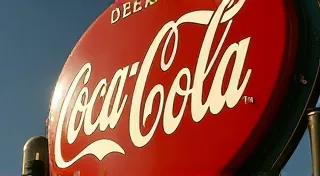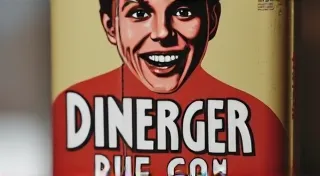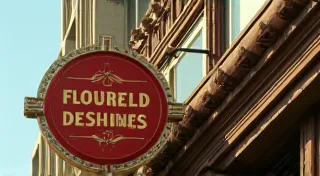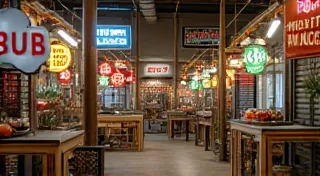Chromatic Ghosts: The Subversive Beauty of Faded Signage
There's a peculiar allure to the relics of a bygone era, a magnetism that draws us to the tangible whispers of history. And few objects embody that allure quite as powerfully as vintage advertising signs. We’re not talking about pristine reproductions, perfectly mirroring their original glory. We’re captivated by the ones that bear the scars of time, the chromatic ghosts of businesses long vanished, their messages softened by decades of sun, rain, and the slow, steady hand of decay. It's in those imperfections, in that fading grandeur, that the true beauty resides.
I remember being a child, riding in the back of my grandfather’s pickup truck. He wasn’t a collector, per se, but he drove routes that took us past countless abandoned farms and forgotten towns. It was in one of those towns, beside a crumbling grain elevator, that I first saw it: a faded sign for "Johnson's Feed & Seed." The paint was blistered, the colors muted, the lettering chipped. But something about its melancholy presence, its quiet endurance, arrested me. It wasn’t just an advertisement; it was a portal to a time I hadn’t known, a visual echo of a community that had once thrived. That moment sparked a lifelong fascination, one that eventually led me to the captivating world of sign collecting.
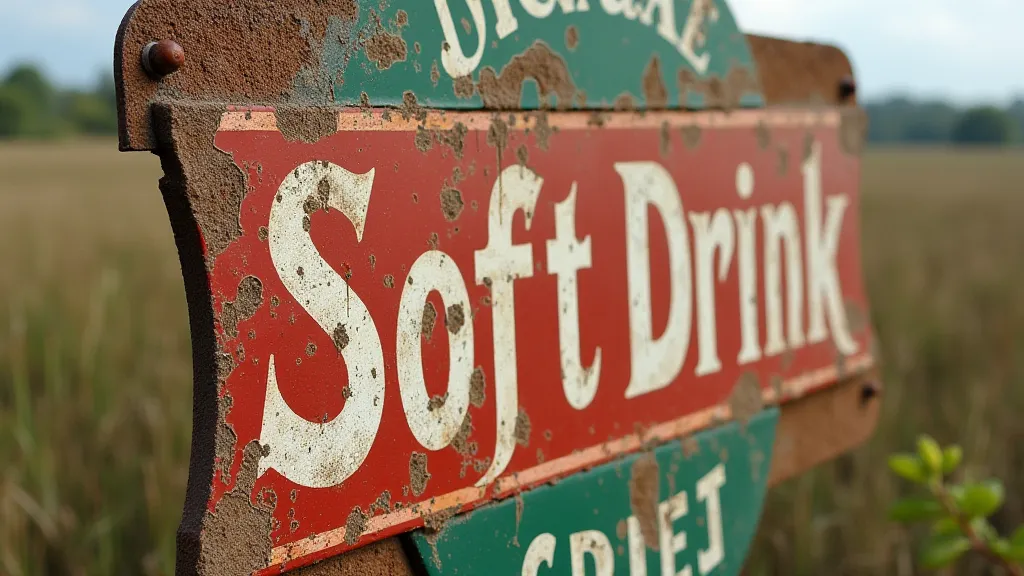
The Poetry of Imperfection: Beyond the Original Intent
The vibrancy of a freshly painted sign is fleeting. Its purpose is to shout, to grab attention, to instantly convey a brand's message. But that immediacy is sacrificed as years pass. The relentless sun bleaches the colors, rain washes away the top layers of paint, and wind carries away the smaller fragments. What remains isn’t a failure; it's a transformation. The commercial message, once the primary focus, recedes into the background, eclipsed by the artistic merit of the degradation itself.
Consider a sign for a long-defunct automobile dealership. The bold, stylized lettering, designed to exude confidence and modernity, becomes softened, almost whimsical, as the paint cracks and peels. The once-gleaming chrome trim tarnishes, revealing the underlying patina of age. It’s no longer just an advertisement; it’s a visual poem about the passage of time, a poignant reminder that even the most ambitious enterprises are subject to the relentless march of history. The degradation becomes a crucial element, adding layers of meaning and emotional resonance. The era of automotive advertising was a distinctive period, and those signs tell a specific story of American ambition and design; learning more about The Golden Age of Automotive Advertising Signs can really enrich your appreciation of their legacy.
Craftsmanship and the Lost Art of Sign Painting
The quality of craftsmanship in these vintage signs is astonishing. Before the advent of digital printing, signs were almost exclusively hand-painted. Sign painters were skilled artisans, masters of their craft, capable of rendering intricate designs and lettering with remarkable precision and artistry. Their work wasn’t just about applying paint; it was about creating a visual statement, a lasting impression. The durability and construction methods of these signs often varied, and a deep dive into The Enduring Appeal of Porcelain Enamel Advertising Signs: A Collector's Guide reveals fascinating details about the materials and processes involved in creating such lasting and beautiful pieces.
Many of these signs were created using the “porcelain enamel” process, also known as “vitreous enamel.” This involved layering fused glass onto a steel base, creating a remarkably durable and weather-resistant surface. While exceptionally long-lasting, even vitreous enamel signs exhibit a unique beauty as the surface becomes subtly pitted and the colors soften with age. The process itself is a testament to the ingenuity and skill of the artisans of the era, and appreciating the nuances of this technique adds another layer of understanding to the allure of these relics.
The Stories Etched in Rust and Paint
Each sign tells a story, a fragment of a lost narrative. A sign for a local hardware store speaks of a community built around self-sufficiency and local commerce. A sign for a soda fountain evokes images of leisurely afternoons spent with friends, sharing a sweet treat. The names, the slogans, the designs – they're all echoes of a past that can feel both familiar and distant. Many signs reflected the rural lifestyle of the time, providing a visual record of the businesses and industries that sustained those communities; a look at Farm & Ranch Advertising Signs offers a fascinating glimpse into that era. Beyond just the businesses themselves, these signs offer insight into the social fabric and values of the communities they served.
I recently acquired a sign for a rural telephone company. The sign itself was in remarkably good condition, but the company name triggered a flurry of memories for a friend. He remembered his grandmother working for that very company, connecting calls in a small, isolated town. The sign wasn’t just an advertisement to him; it was a tangible link to his family history, a symbol of a simpler time. It's experiences like these that highlight the profound emotional connection we can forge with these seemingly simple objects.

Collecting and Preservation: A Delicate Balance
For the collector, acquiring a vintage advertising sign is about more than just possessing a piece of history. It’s about preserving a tangible connection to the past, ensuring that these visual relics continue to tell their stories for generations to come. However, the question of restoration is a complex one. Should these signs be meticulously restored to their original condition, erasing the very evidence of their age and resilience? Or should they be left as they are, allowing the beauty of decay to remain intact?
There's no easy answer. Many collectors believe that preserving the patina of age is essential to maintaining the sign's historical integrity. A small amount of cleaning might be acceptable, but aggressive restoration techniques can strip away the very character that makes the sign so compelling. Furthermore, understanding how these signs were originally made is key to proper care; resources like Protecting Your Sign Collection: Storage and Display Tips offer vital information for ensuring their long-term survival.
The goal is to stabilize the sign, prevent further deterioration, and appreciate the unique beauty of its weathered surface. Sometimes, simply protecting a sign from the elements is the best form of preservation. It's a constant balancing act, respecting the past while safeguarding the future.
Beyond the Commercial: Finding Beauty in the Ephemeral
The allure of vintage advertising signs extends far beyond their commercial origins. They represent a connection to a simpler time, a reminder of the enduring power of craftsmanship, and a poignant reflection on the ephemerality of all things. The faded colors, the chipped paint, the rusted lettering – they’re not signs of decline; they’re testament to the passage of time, to the beauty of resilience, and to the enduring power of memory. They are chromatic ghosts, whispering stories from a forgotten era, and inviting us to appreciate the poignant beauty of a world in constant flux.
The stories these signs tell are often deeply personal, evoking memories of childhood, family, and community. They offer a glimpse into a world that has largely disappeared, a world of local businesses, handcrafted goods, and a slower pace of life. They are more than just advertisements; they are cultural artifacts, windows into the past that allow us to connect with a time and place that is both familiar and distant. And while many signs were designed for a specific purpose, their continued relevance lies in their ability to evoke nostalgia, spark curiosity, and inspire a sense of wonder.
The beauty of these signs also lies in their imperfections. The cracks, the chips, the rust – these are not flaws; they are marks of authenticity, evidence of a life lived. They are a testament to the passage of time, a reminder that nothing lasts forever. And it is in these imperfections that we find the true beauty of these chromatic ghosts.
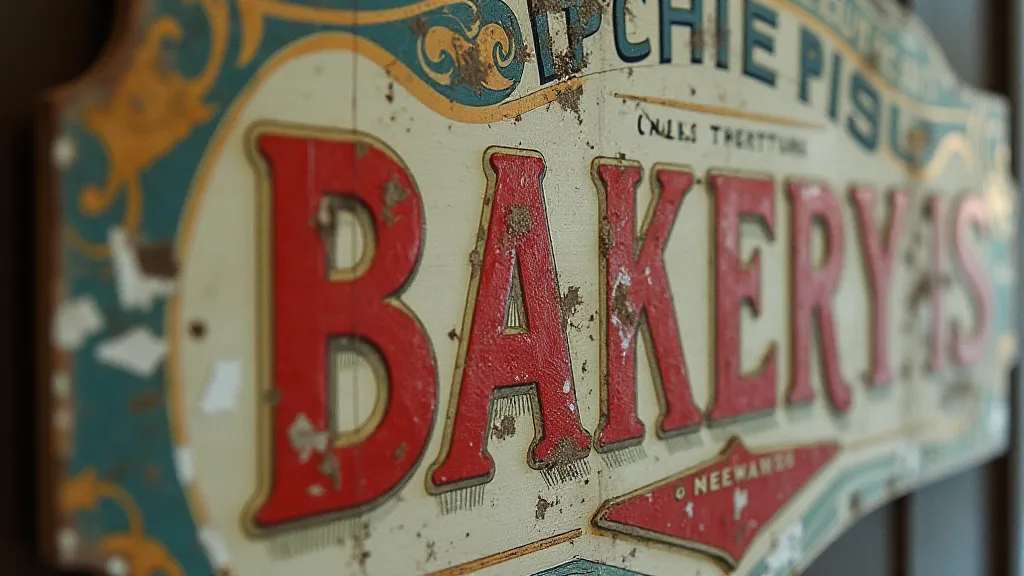
Thinking about the era when these signs were prevalent can really help appreciate their historical significance. Understanding the cultural and economic context in which these businesses operated enriches the understanding of these relics and provides greater insight into the lives of those who built and sustained them. The stories they tell are a rich tapestry woven from the threads of ambition, innovation, and community spirit.
Furthermore, the rise and fall of these businesses, reflected in the signage, provides a valuable case study in the dynamics of commerce and the relentless march of progress. The beauty lies not only in the artistry of the signs themselves but also in the poignant reminder of the businesses and people they represented.
Collecting these signs is more than just an hobby; it's a form of historical preservation, a tangible link to a vanishing era. It’s a way to honor the craftsmanship, the entrepreneurial spirit, and the enduring power of community that shaped our past. And as the world continues to evolve, these signs serve as a poignant reminder of the enduring human desire for connection, purpose, and a place to call home.
